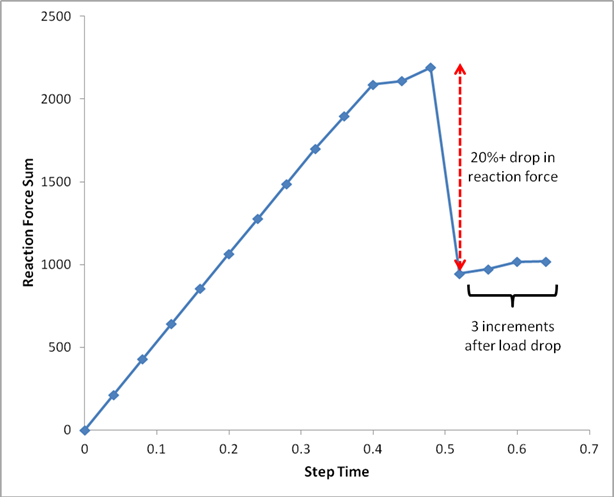Specify when an analysis should be terminated.
During progressive failure analyses, it can be common for a majority of the solution time to be spent solving the model after catastrophic failure has occurred. To improve efficiency, Autodesk has developed a tool that monitors the load response of the simulated structure and terminates the analysis after a user specified drop in the load. The tool can also monitor changes in velocity, which is useful for force controlled loading. To monitor results while the analysis is running, a .fil results file that outputs either the reaction force or displacement for the node set of interest must be requested in the Abaqus input file. For example, the Abaqus keyword shown below would output both the reaction force and the displacement for a defined node set to the .fil results file:
*NODE FILE, NSET=LOADED_NODES RF, U
To use the tool, include the following keyword, parameters, and data line in the HIN file:
*JOB TERMINATION, MONITOR=[LOAD/VELOCITY] FRACTION_DIFF, NUM_INCS
If MONITOR=LOAD, the sum of the reaction forces in the .fil file will be monitored and if the sum decreases by FRACTION_DIFF or more in one increment, the job will run for NUM_INCS more increments and then terminate the job.
If MONITOR=VELOCITY, the time rate of change of the maximum magnitude of displacement values of all the displacements in the .fil file will be monitored. If the velocity increases by FRACTION_DIFF or more from one increment to the next, the job will run for NUM_INCS more increments and then terminate the job.
As an example, consider the keyword statement shown below. With these settings, Helius PFA will terminate the job 3 increments after the load has dropped 20% or more from one increment to the next. The plot below is an example load-time curve that could result from this keyword configuration.
*JOB TERMINATION, MONITOR=LOAD 0.2, 3
